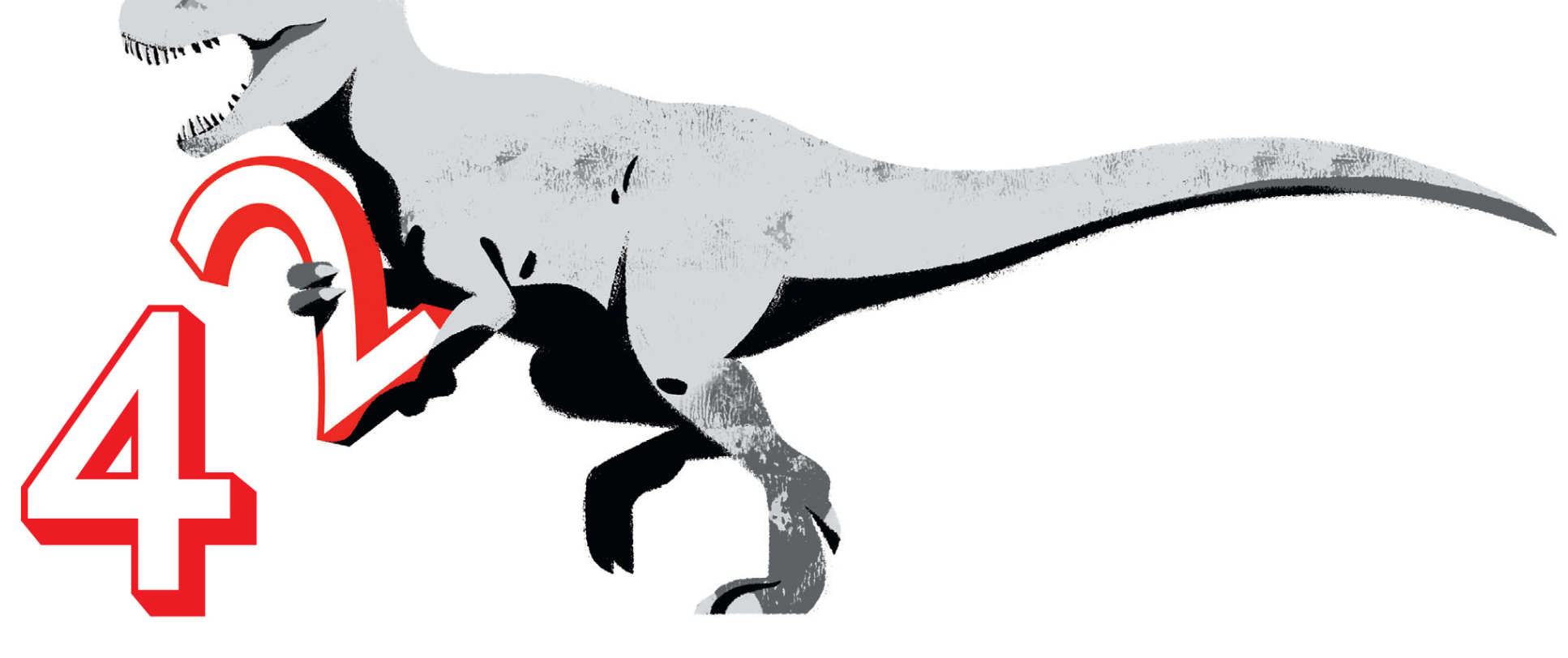According to The Hitchhiker’s Guide to the Galaxy, 42 is the answer. But what is the question? We investigate the questions scientists are asking to solve global challenges, including the death of dinosaurs.
 Illustrations: Tommy Parker
Illustrations: Tommy Parker
We are fairly sure that we know how the dinosaurs were wiped out. Sixty-six million years ago a ten-mile-wide asteroid smashed into the earth. The dinosaurs were destroyed, along with 75 per cent of all plant and animal species on earth. Described as “the event that changed the course of evolution”, the world of science continues to be absorbed by the details. But for Joanna Morgan, Professor of Geophysics in the Department of Earth Science and Engineering, the question she wants to answer is: exactly what effect did this large impact have on the future of the planet?
Professor Morgan’s work is focused on the Chicxulub crater, buried underneath the Yucatán Peninsula in Mexico and widely accepted as the place the asteroid crashed into the earth, triggering the Cretaceous-Paleogene extinction. The crater is more than 110 miles in diameter, making it the third of the largest confirmed impact structures on Earth.
“What we were expecting prior to drilling the crater – which we started last March as part of the International Ocean Discovery Program – was for the area to be a ground zero. If anywhere on earth would be sterile just after the impact, it would surely be here. But what we actually found was similar fossils as elsewhere, showing us that, even with potentially toxic, hydrothermal venting, life returned to the ocean above the crater immediately after the impact.”
Another unexpected finding from the drilling, she adds, is that there is life today in the crater several hundred metres below the surface, suggesting that the crater has been colonised since the impact. “We’ve extracted DNA, which has been cultured, and the indicators are that all three domains of life – bacteria, ucerota and arcaea – are present in the crater. We have started the sequencing now to find out exactly what type of life that is.”
As a geophysicist (the others on the international team include geochemists, paleomagnetisists, geologists and microbiologists), Morgan explains that the Imperial group is currently working on one specific aspect relating to the crater. “We are simulating the formation of the crater to try and work out what direction and angle the earth was hit – and what we can see is that the crater is asymmetric, which suggests the angle may have been oblique. And we’re also trying to unravel how differences in the rocks at the impact site affected that crater asymmetry.
“Discovering more about this incredible event should help us understand other craters and their effects on life. In early earth, for example, there were many more large impacts – and there have also been such impacts in Mars, where researchers are also looking for life.”